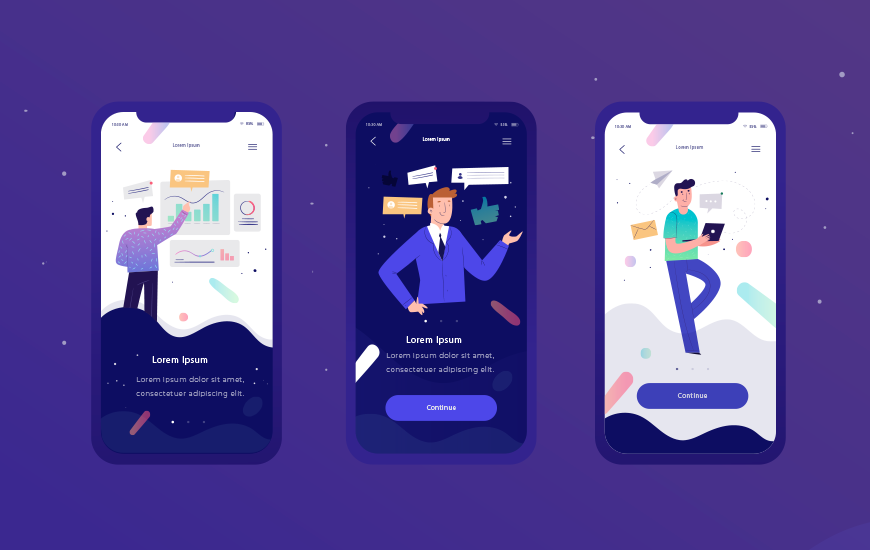Do you in business deal with several vendors? Do you find it hard to follow up on all vendors, prospects, orders, and project deliverables? Also, is this impacting your business productivity? If the answer to these are yes, then the time is ripe for you to make a change. Businesses invest big-time on approaching vendors to invite quotations, and then focus hard on knowing about the statuses. With Salesforce at your disposal for vendor management, you can utilize any prospects and various vendors from a single location apart from dealing with your chief business operations.
Salesforce has been a blessing
Being a leading cloud computing platforms, Salesforce has totally transformed the manner in which organizations carry out business by bringing a hugely dynamic, customized and user-friendly platform for holistic implementation services, i.e. Force.com. With Force.com, developers can rapidly make and deploy ideal cloud applications that are compact, safe, and accessible and without fretting over provisioning hardware or application stacks. Also, this platform offers different tools for explaining the data model, the business rationale, and the user interface.
Two To Tango
It does not matter what you’re creating: a totally refurbished UI, merging data from several sources, or utilizing frameworks such as AngularJS, Ember, React, or Backbone, there will be scenarios where you would have to heavily utilize JavaScript. In case you are keeping a track of web development for the last few years, you would have seen the rise in the appeal of JavaScript frameworks in terms of building web applications. Currently, JavaScript frameworks have deservedly made their way into the Salesforce development lifecycle.
Top Salesforce Trends
Hence, at present it is very much obvious that it has become essential to utilize a CRM to boost sales and new customers and look after the retention rates. If someone mentions ‘CRM,’ then the first thing that comes to our mind is Salesforce, as this happens to be the czar in the CRM market. Hence, let us look at some of the famous Salesforce trends and the way businesses are going to capitalize on Salesforce in 2021.
Mobile Evolution
The trend of buying via mobile, and helping the software to back and turn the user experience convenient via disentangled interface design, began many moons ago. Salesforce will keep growing in this regard and the same thing can be expected this year. Among the mobile Salesforce prospects featured in 2021 happens to be a mobile application that helps to deal with the CRM instance on the go for all users in the system and building mobile web-pages and applications with Salesforce SDK with lesser involvement of code.
Artificial Intelligence
One of the biggest technical innovations in recent times, AI has started spreading its tentacles to the majority of the sectors. Even sales departments, regardless of any business, can derive a lot of advantages from it. Salesforce unleashed Einstein AI some time back, and while it is growing consistently, at present it is very much handy to improve the functioning of current products to derive maximum out of them. Sales Cloud permits AI to spot the ideal opportunities and offer useful insights through a sales analytics app and add more authenticity to the predictions. With this, it is possible to set automatic notifications to work on potential leads and as a result enhance the prospects of successful deals. A machine learning feature helps in case classifications and by utilizing Service Cloud, customer support representatives can solve routine cases early. Experts forecast that in 2021, executing Einstein AI into Salesforce products is going to be the most common request to Salesforce consulting companies and individuals.
Tailored to suit specific requirements
These days, it is not simply adequate to utilize a product out of the box as it is. Customization was very much there in Salesforce, but business industries in large numbers are triggering demand for certain functionalities and customizing the product in line with particular requirements, considering the array of various tools needed for a certain business to operate, such as billing systems, risk management, project management features, and other industry-specific things and workflows. It is obvious that being in the apparel business is different from being in the business offering booking services. This year, especially businesses have to seriously ponder over streamlining of their CRM. Like any software customization, you will have to get professional counseling to ensure that everything is established as per your requirements. Selecting the appropriate Salesforce consulting partner will define the success of your business. So, while taking such a call, don’t ignore the certifications and accord weightage to official Salesforce partners as this will help you in getting the desired outcomes for your business but also will save time and money for you.
Customer 360 platform
It is becoming extremely critical to nurture good ties with customers these days, as the technology evolves the satisfaction of existing customers matters a lot for businesses. This precisely the reason why assistance departments of all companies are emphasizing on offering excellent services to their clients. Currently, the Salesforce Customer 360 feature can lead to a lot of prosperity for the businesses. At the conclusion last year, Salesforce launched Customer 360 Truth edition that permits merging information of customers from all Salesforce applications at one place. By providing a unique ID to a user, you can see all previous interactions and profile details to ascertain how to provide the right solutions for any problems and display the superior level of customer care service.
Marketing Automation
This has to be highlighted, as this year we might see the proclivity to assign the resources to strategic goals and improving normal tasks devoid of human intervention. Marketing Sales Cloud can enhance marketing campaigns by helping you to dispatch automated emails, arrange customer data to offer targeted discounts, perform A/B tests, and many more things. That is the reason why business owners’ and marketers’ will be focusing on the same this year.
Finally
As a leading phenomenon in the CRM market, Salesforce will set new trends in almost all the industries. Having said that, the enhancement of the current Salesforce features, and the new releases are very important in helping businesses to grow further.




